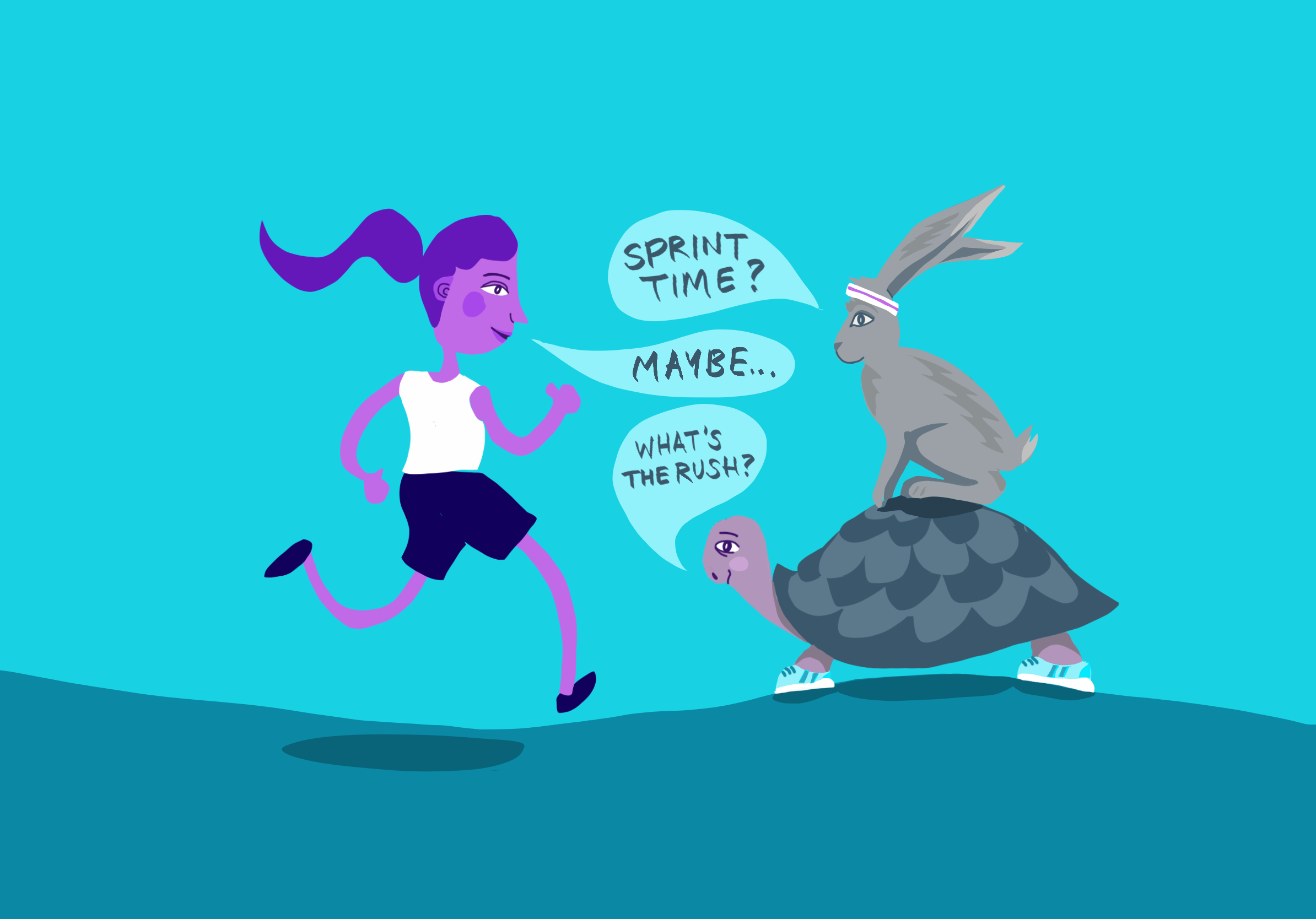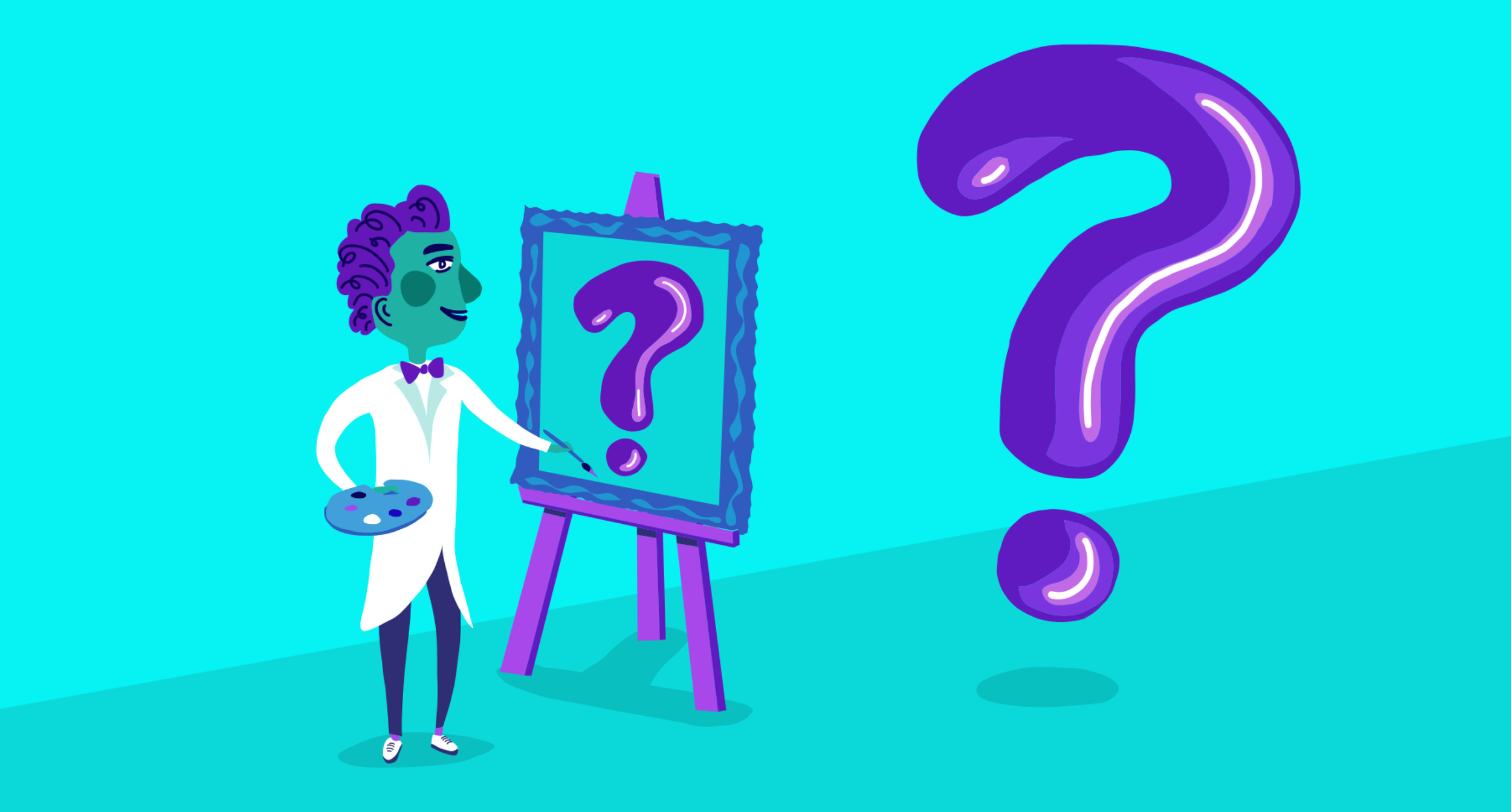
What we think
In our articles we explore the intersection of creativity, innovation and behavioural science
We have three article collections; Here For Innovators, Thinking Outside the Books and Design Research 101
Here for Innovators Series
Our perspective on the big challenges faced by innovators and how to overcome them
Ever curious about the Science of Creativity and how we can apply it to our day-to-day creative practices, we’ve been exploring the links between creativity and health. In this article, we’ll be exploring food and creativity and how paying attention to what you eat could be deliberately harnessed as a tool to boost the creative power of teams.
Within the scientific literature around dream creativity, it’s clear that sleep can help to generate new ideas and help with creative problem solving—but how significant is this? How important is sleep overall when thinking about how creative we are as individuals?
It can be difficult to introduce design thinking and its value as an innovation approach to someone unfamiliar with it. So, in this article we dive into this challenge and explore three distinct yet interconnected perspectives that when combined, can help innovators understand how they might unlock the design thinking puzzle.
Constraints have an impact on our creative process, on what we can do and how we can do it. They are ubiquitous and inescapable. So, how can innovators leverage thinking in constraints to get to stronger ideas with greater, real-world potential?
When comparing different markets for global insight challenges, it is important to consider the impact of cultural nuances. In this article, INDUSTRY of Us explores Hofstede’s model for cultural dimensions, breaking it down and showing how it can be used at different stages of global research projects.
In a world where negative is the new positive, we explore the concept of bad = good. Specifically, in what situations could something negative, or “bad”, actually be helping to deliver a better user experience or outcome?
When designing user experiences, how do you create emotional highs? We explore some of the behavioural science around experience and emotion, with a focus on three key stages: Before, During and After.
What are the differences between Design Sprints and design thinking? We explore some of the defining characteristics that make Design Sprints different and help understand when to choose them
What role does creativity and innovation have during a crisis? We explore four important types of creativity from personal to transformation and how they can play a role.
Often, the biggest challenge when it comes to innovation isn’t coming up with a great idea, but influencing internally and progressing ideas through the organisation. The behavioural, human element of decision-making plays a key role in whether ideas succeed or fail.
Design Research 101 Series
A 6-part series on the role of design research and how to involve consumers in the creative process
When it comes to delivering design research, how do you engage your audience and key stakeholders to make sure it’s interesting and actionable? How do you turn insight to action?
Exploring early ideas with consumers during the innovation process can be challenging. When should you do it? How should you do it? In fact, should you do it at all? Here are four of the key problems you’re likely to face and how you can overcome them.
Empathy is frequently cited as a key design thinking skill, but what’s the psychology behind it, and how does knowing this help us use empathy more effectively during the creative journey?
Should you involve consumers in the creative process? What’s the best way of doing it? Thinking about the different roles, or ‘hats’ you want consumers to wear can help you get more meaningful and useful input.
Individual perspectives have a powerful role to play in design research. We all see things differently, and there are some scenarios where the perspective of the person conducting the research is as interesting and important as the person we are talking to or observing.
What is the difference between design research and qualitative research? The key difference is the dual role of design research to both understand and inspire, and this plays out in several key ways.
Thinking Outside the Books Series
A creative twist on well-known, influential books, we share our thoughts on key theories and what they mean for creativity and innovation
In a start-up or scale-up, moving fast on the right idea isn’t just about gaining a competitive advantage, it’s about survival. Learning how to select and develop the right idea is paramount. So, what can be learnt from a start-up mindset and how can thinking in bets for innovators build stronger ideas in a lean, smart and flexible way?
In an increasingly uncertain and volatile world, we reflect on whether it is possible to forecast the future, and what this means for innovators; drawing learnings and inspiration from the book, ‘Superforecasting’ by Dan Gardner and Philip Tetlock.
Why do we ask questions? Why are they valuable? Why should we ask Why? We explore the beauty of “why” in our take on Warren Berger’s book, A More Beautiful Question.
Have you ever wondered what impact your vocabulary might have on the way you feel and how you empathise with others? We explore Dr Lisa Feldman-Barrett’s groundbreaking theory of constructed emotion.
What is an “insight”, and where do insights come from? We explore Gary Klein’s Triple Path model to insight, and how to apply it in the world of creativity and innovation
What happens when you look at Design Sprints from a behavioural science perspective? We explore three interesting themes: Time, Ownership and Persuasion and discuss their impact on the process
Why are we drawn to collaborate? And how can understanding the psychology of social behaviour allow us to work more effectively on the creative journey? Here are our thoughts on Matthew Lieberman’s book Social.
We reflect on Carol Dweck’s famous book Mindset, and how the power of a growth mindset can drive more creative outcomes.
We discuss the implications of Daniel Kahneman’s brilliant book Thinking Fast and Slow for individual and group creativity, and how behavioural science can be an important tool for innovators.
As an introvert, I've spent much of my life feeling pressure to be more extrovert. Susan Cain's refreshing book Quiet has given me a new perspective of the power of introverts in creative collaboration.
Latest Articles
Zen and the Art of Creativity
Ever-curious about the Science of Creativity and how we can apply it to our day-to-day creative practices, we’ve been exploring the links between creativity and health. In this article we’ll be exploring the topic of mindfulness and creativity—and how bringing mindfulness to your innovation practice could be deliberately harnessed as a tool to boost the creative power of teams.


























